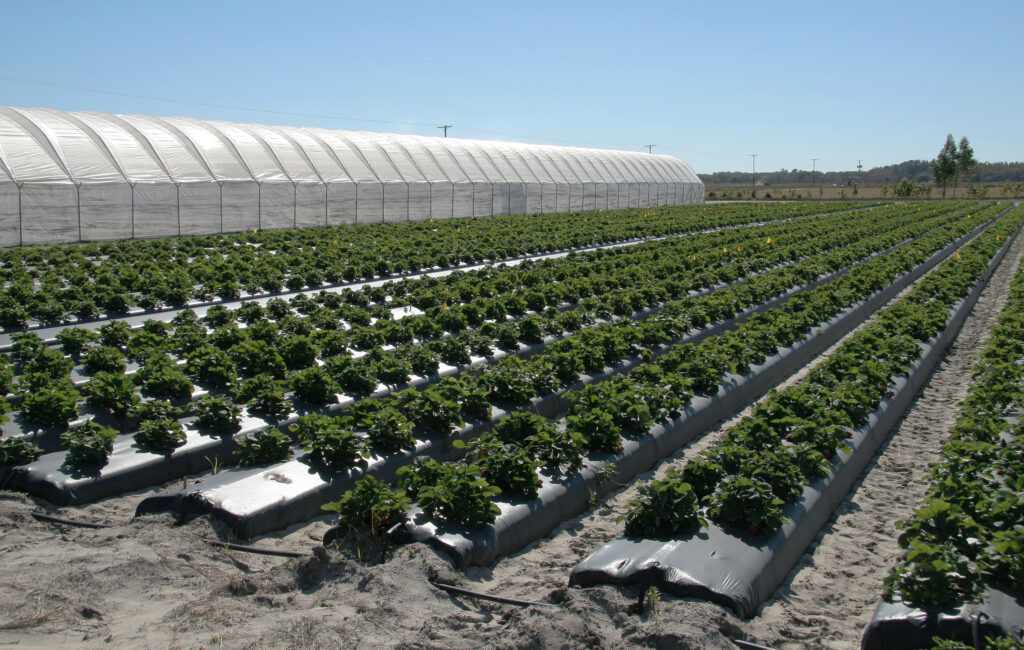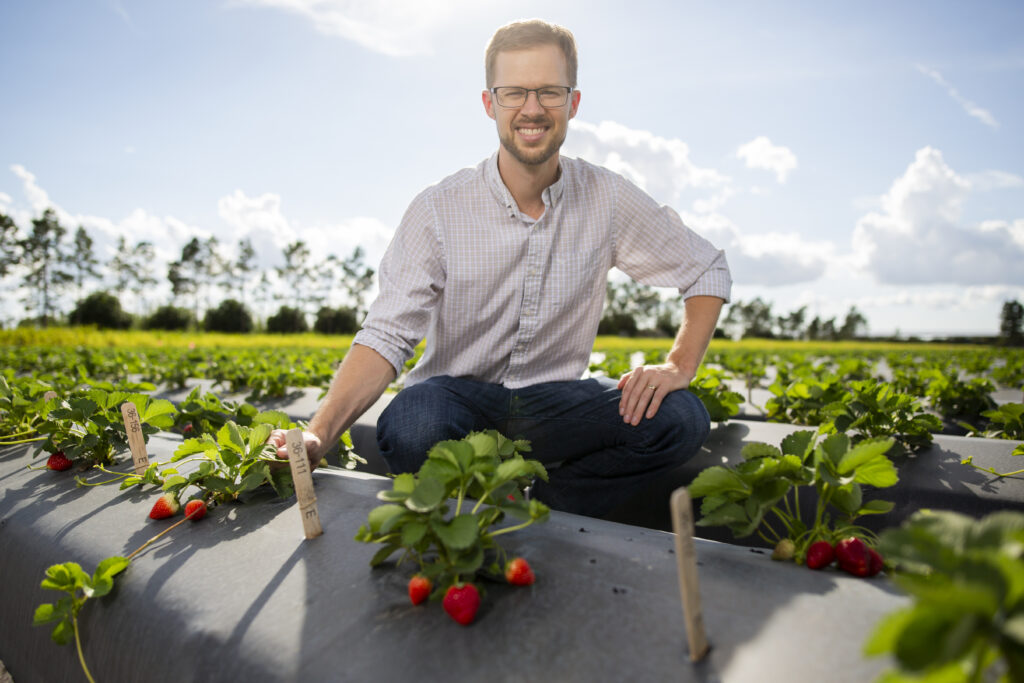By Brad Buck, UF/IFAS Communications
Florida strawberry growers are a resilient bunch. They’ve survived the back-to-back punches from hurricanes Helene and Milton.
Through hard work and efficient problem-solving, they have planted the fruits you’ll enjoy from December through April.
Kenneth Parker, executive director of the Florida Strawberry Growers Association, works regularly with University of Florida breeders, Extension agents and growers to help communicate the needs of the Florida strawberry industry.

Growers are doing their best to ensure Florida strawberries are available for the holidays.
“As a general rule of thumb, Florida growers aim to complete planting each year around the first of November,” Parker said. “For the most part, the industry has held to this standard through the hard work, dedication and perseverance of both our growers and farmworkers.”
Following the storms, some areas required more effort to get the fields back in working order to complete planting. Growers had to wait until the water receded before they could begin their recovery efforts, Parker said.
“There is no way of accurately predicting yield each season due to all the variables that determine this number,” he said. “But we look forward to meeting the demands of consumers this growing season with the freshest, highest quality strawberries.”
Call it coincidental timing, but with the flooding, some growers are now planting two new UF/IFAS strawberry varieties that resist a disease that the plants can get from too much moisture in the soil.
UF/IFAS professor and strawberry breeder Vance Whitaker has developed Ember and Encore, bred to resist phytophthora root rot. The resistance could prove helpful to strawberry yields, given the volume of rain that fell and how wet the soil is, Whitaker said.

“Some plants experienced a lot of water. The flooding is most likely to kill a plant that’s susceptible to root diseases,” a faculty member at the UF/IFAS Gulf Coast Research and Education Center said. “So, these new varieties should help growers maintain their yield as well as provide a new level of fruit quality.”
In their first year of commercial use, the two varieties make up about 10% of the 14,000 acres of strawberries in Florida. While that’s not a huge percentage, Whitaker expects the acreage to rise in future years.
“We have a favorable weather outlook for the harvesting season,” he said. “People should expect a typical Florida strawberry season.”
It took about four years to develop these new cultivars and get them out to commercial farms, which is pretty normal for a new variety. But the time spent is well worth the effort, even if it’s sometimes in inclement weather, Whitaker said.
“The breeding program had to get through the hurricanes and get our trials planted, ultimately for the benefit of the industry,” he said. “We’re all in this together. We support the growers, and they’ve been supportive of us.”
Banner image: Hands holding strawberries. (Courtesy, UF/IFAS photography). This piece was originally published at https://blogs.ifas.ufl.edu/news/2024/11/13/following-hurricane-milton-florida-growers-show-resilience-in-ensuring-fresh-florida-strawberries-are-available-this-season/.
Sign up for The Invading Sea newsletter by visiting here. If you are interested in submitting an opinion piece to The Invading Sea, email Editor Nathan Crabbe at ncrabbe@fau.edu. To support The Invading Sea, click here to make a donation.



